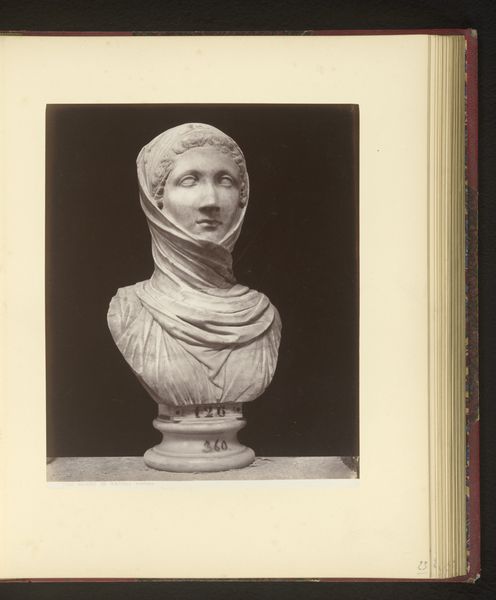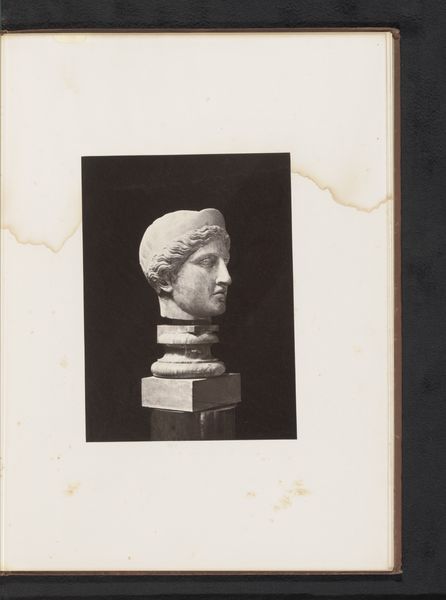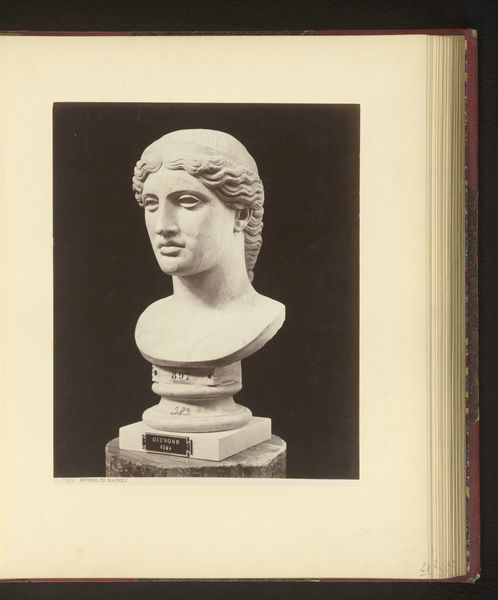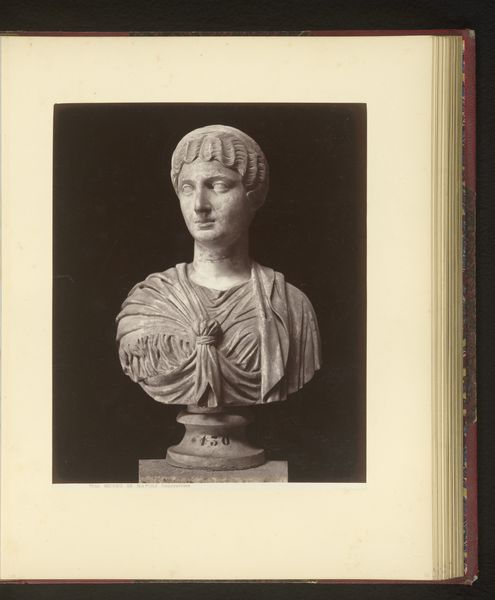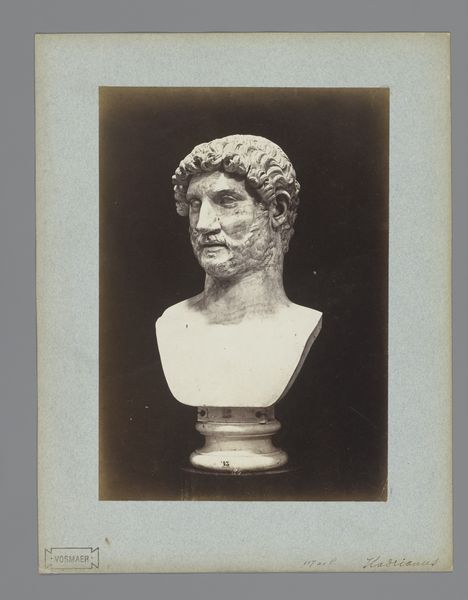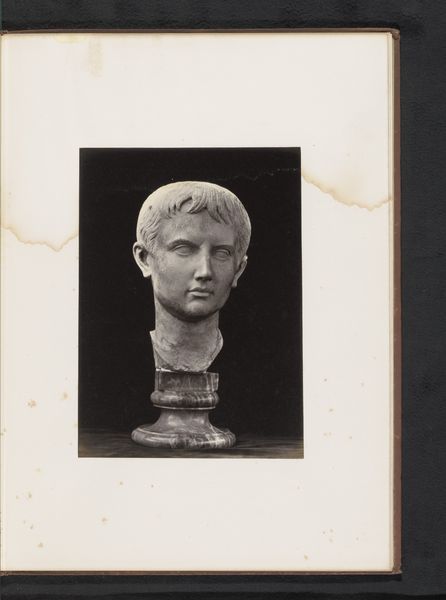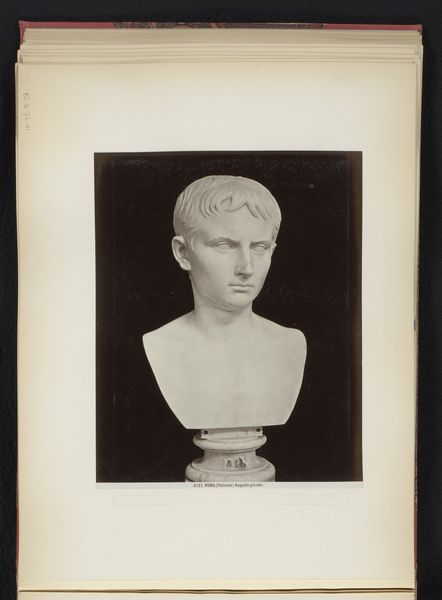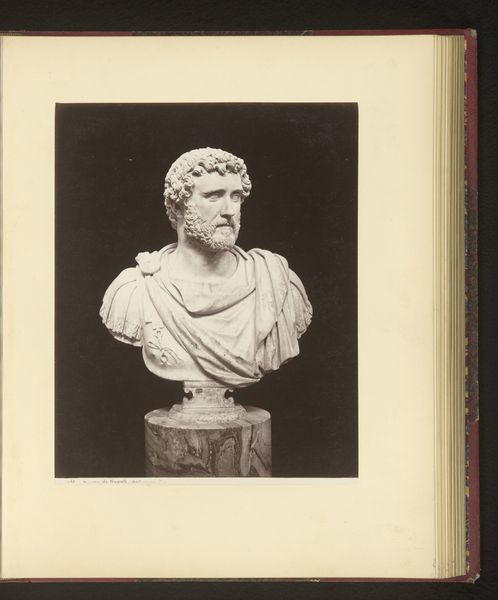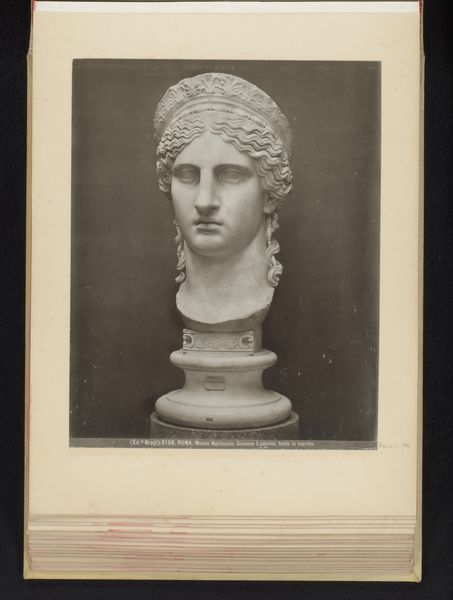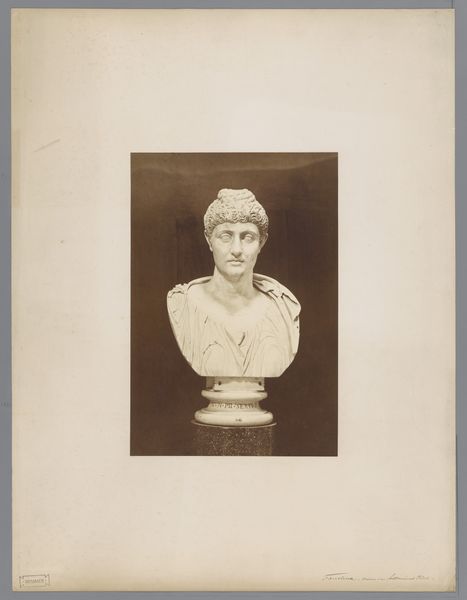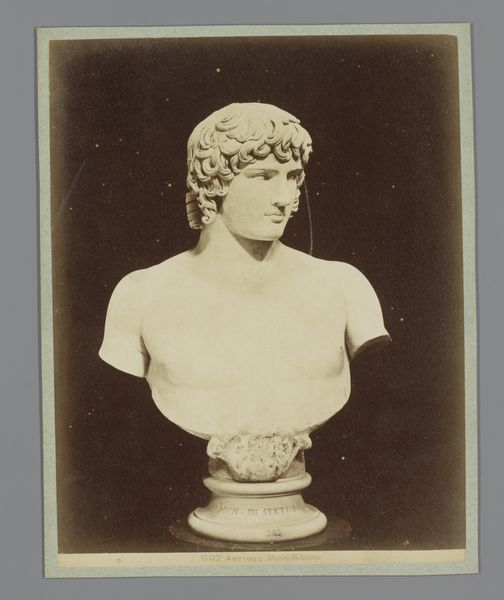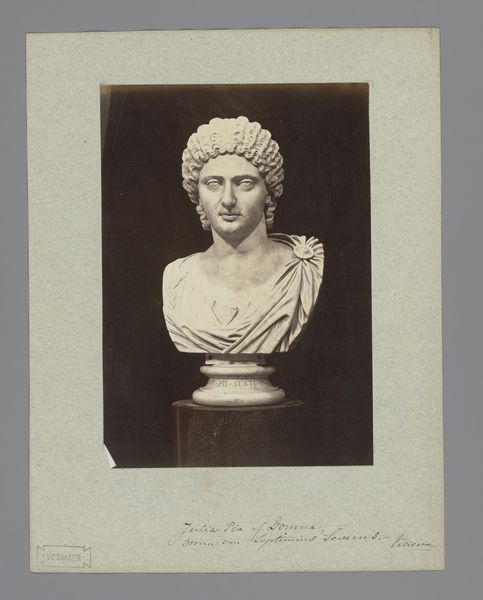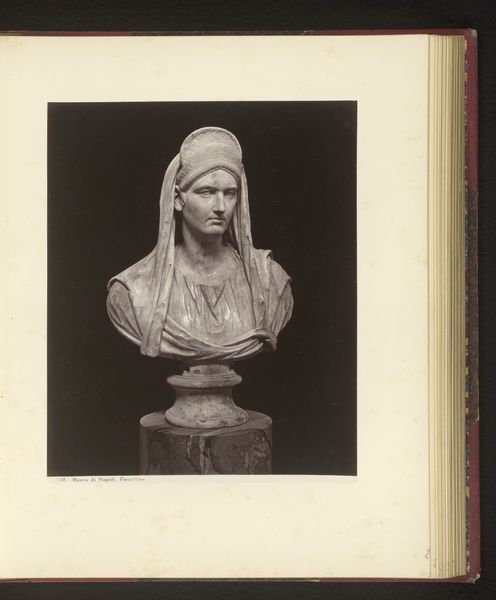
photography, sculpture
#
portrait
#
sculpture
#
photography
#
ancient-mediterranean
#
sculpture
Dimensions: height 253 mm, width 203 mm
Copyright: Rijks Museum: Open Domain
Editor: This is a photograph by Giorgio Sommer, titled "Sculptuur van vermoedelijk Brutus" or "Sculpture of presumably Brutus" taken sometime before 1879. It depicts a sculpted bust, and its presentation within the photograph itself, framed in a book, makes me think about accessibility of art for the masses in the 19th century. What strikes you about this piece? Curator: What immediately captures my attention is the interplay between the presumed value of the classical sculpture and the relatively "low-art" medium of photography used to represent it. Who was the intended consumer, and how did they understand the relationship between the original sculpture, the photographic print, and the knowledge they gleaned? This photographic rendering democratizes the artwork by circulating an image of the bust beyond the confines of a museum, almost mass-producing access. It asks us, what is lost and what is gained in this translation of material and form? Editor: That’s fascinating! So you’re focusing on the implications of reproducing a sculpture through photography and its effects on art consumption and value? Curator: Precisely. Consider the labor involved. Someone carved the original sculpture –likely by hand, from marble or another stone. Sommer then captured this work, most probably using the wet collodion process. Developing the negative was an involved process, a far cry from our digital snapshots today. The value isn’t just inherent to the sculpture; it’s embedded in the entire chain of production and the socio-economic structures surrounding it. What was the economic value of ancient art as cultural cache, for Sommer and for consumers in the 19th century? Editor: I hadn't considered that the act of photographing the sculpture adds another layer of meaning related to production. Thank you! It has made me think about art history in an unexpected and exciting manner. Curator: The layers of labor shape how we interact with even classical works such as this. It’s these processes that truly reveal the artwork’s context and continued relevance.
Comments
No comments
Be the first to comment and join the conversation on the ultimate creative platform.
